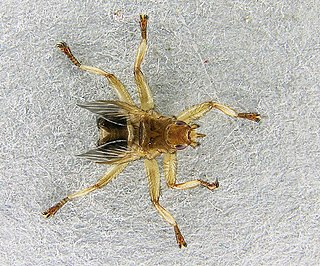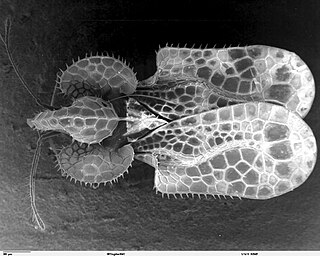
Fagaceae is a family of flowering plants that includes beeches and oaks, and comprises eight genera with about 927 species. Fagaceae in temperate regions are mostly deciduous, whereas in the tropics, many species occur as evergreen trees and shrubs. They are characterized by alternate simple leaves with pinnate venation, unisexual flowers in the form of catkins, and fruit in the form of cup-like (cupule) nuts. Their leaves are often lobed and both petioles and stipules are generally present. Their fruits lack endosperm and lie in a scaly or spiny husk that may or may not enclose the entire nut, which may consist of one to seven seeds. In the oaks, genus Quercus, the fruit is a non-valved nut called an acorn. The husk of the acorn in most oaks only forms a cup in which the nut sits. Other members of the family have fully enclosed nuts. Fagaceae is one of the most ecologically important woody plant families in the Northern Hemisphere, as oaks form the backbone of temperate forest in North America, Europe, and Asia and one of the most significant sources of wildlife fodder.

Cucurbita is a genus of herbaceous vegetables in the gourd family, Cucurbitaceae native to the Andes and Mesoamerica. Five species are grown worldwide for their edible vegetable, variously known as squash, pumpkin, or gourd, depending on species, variety, and local parlance, and for their seeds. Other kinds of gourd, also called bottle-gourds, are native to Africa and belong to the genus Lagenaria, which is in the same family and subfamily as Cucurbita, but in a different tribe. These other gourds are used as utensils or vessels, and their young fruits are eaten much like those of Cucurbita species.

Cimexomys is an extinct North American mammal that lived from the Upper Cretaceous to the Paleocene. For a while, it shared the world with dinosaurs, but outlived them. It was a member of the extinct order Multituberculata and lies within the suborder Cimolodonta. It is perhaps a member of the Paracimexomys group, though it is not certain.

The Trionychidae are a taxonomic family of a number of turtle genera, commonly known as softshell turtles. The family was erected by Leopold Fitzinger in 1826. Softshells include some of the world's largest freshwater turtles, though many can adapt to living in highly brackish areas. Members of this family occur in Africa, Asia, and North America. Most species have traditionally been included in the genus Trionyx, but the vast majority have since been moved to other genera. Among these are the North American Apalone softshells that were placed in Trionyx until 1987.

The Phasmatodea are an order of insects whose members are variously known as stick insects, stick-bugs, walking sticks, stick animals, or bug sticks. They are generally referred to as phasmatodeans, phasmids, or ghost insects. Phasmids in the family Phylliidae are called leaf insects, leaf-bugs, walking leaves, or bug leaves. The group's name is derived from the Ancient Greek φάσμα phasma, meaning an apparition or phantom, referring to their resemblance to vegetation while in fact being animals. Their natural camouflage makes them difficult for predators to detect; still, many species have one of several secondary lines of defense in the form of startle displays, spines or toxic secretions. Stick insects from the genera Phryganistria, Ctenomorpha, and Phobaeticus includes the world's longest insects.

The Colorado potato beetle, also known as the Colorado beetle, the ten-striped spearman, the ten-lined potato beetle, or the potato bug, is a major pest of potato crops. It is about 10 mm long, with a bright yellow/orange body and five bold brown stripes along the length of each of its elytra. Native to the Rocky Mountains, it spread rapidly in potato crops across America and then Europe from 1859 onwards.

The gray catbird, also spelled grey catbird, is a medium-sized North American and Central American perching bird of the mimid family. It is the only member of the "catbird" genus Dumetella. Like the black catbird, it is among the basal lineages of the Mimidae, probably a closer relative of the Caribbean thrasher and trembler assemblage than of the mockingbirds and Toxostoma thrashers. In some areas it is known as the slate-colored mockingbird.

The Pentatomoidea are a superfamily of insects in the Heteroptera suborder of the Hemiptera order. As Hemiptera, they share a common arrangement of sucking mouthparts. The roughly 7000 species under Pentatomoidea are divided into 21 families. Among these are the shield bugs, giant shield bugs, burrower bugs, and stink bugs.

Thomas Say was an American entomologist, conchologist, and herpetologist. His definitive studies of insects and shells, numerous contributions to scientific journals, and scientific expeditions to Florida, Georgia, the Rocky Mountains, Mexico, and elsewhere made him an internationally known naturalist. Say has been called the father of American descriptive entomology and American conchology. He served as librarian for the Academy of Natural Sciences of Philadelphia, curator at the American Philosophical Society, and professor of natural history at the University of Pennsylvania.

The Reduviidae are a large cosmopolitan family of the order Hemiptera. Among the Hemiptera and together with the Nabidae almost all species are terrestrial ambush predators: most other predatory Hemiptera are aquatic. The main examples of nonpredatory Reduviidae are some blood-sucking ectoparasites in the subfamily Triatominae. Though spectacular exceptions are known, most members of the family are fairly easily recognizable; they have a relatively narrow neck, sturdy build, and formidable curved proboscis. Large specimens should be handled with caution, if at all, because they sometimes defend themselves with a very painful stab from the proboscis.

Pyrrhocoridae is a family of insects with more than 300 species world-wide. Many are red coloured and are known as red bugs and some species are called cotton stainers because their feeding activities leave an indelible yellow-brownish stain on cotton crops. A common species in parts of Europe is the firebug, and its genus name Pyrrhocoris and the family name are derived from the Greek roots for fire "pyrrho-" and bug "coris". Members of this family are often confused with, but can be quickly separated from, Lygaeidae by the lack of ocelli on the top of the head.

The big brown bat is a species of vesper bat distributed widely throughout North America, the Caribbean, and the northern portion of South America. It was first described as a species in 1796. Compared to other microbats, the big brown bat is relatively large, weighing 15–26 g (0.53–0.92 oz) and possessing a wingspan of 32.5–35 cm (12.8–13.8 in).

Belostomatidae is a family of freshwater hemipteran insects known as giant water bugs or colloquially as toe-biters, Indian toe-biters, electric-light bugs, alligator ticks, or alligator fleas. They are the largest insects in the order Hemiptera. There are about 170 species found in freshwater habitats worldwide, with more than 110 in the Neotropics, more than 20 in Africa, almost as many in the Nearctic, and far fewer elsewhere. These predators are typically encountered in freshwater ponds, marshes and slow-flowing streams. Most species are at least 2 cm (0.8 in) long, although smaller species, down to 0.9 cm (0.35 in), also exist. The largest are members of the genus Lethocerus, which can exceed 12 cm (4.5 in) and nearly reach the length of some of the largest beetles in the world. Giant water bugs are a popular food in parts of Asia.

The collared peccary is a species of artiodactyl (even-toed) mammal in the family Tayassuidae found in North, Central, and South America. It is the only member of the genus Dicotyles. They are commonly referred to as javelina, saíno, or báquiro, although these terms are also used to describe other species in the family. The species is also known as the musk hog. In Trinidad, it is colloquially known as quenk.

Hippoboscidae, the louse flies or keds, are obligate parasites of mammals and birds. In this family, the winged species can fly at least reasonably well, though others with vestigial or no wings are flightless and highly apomorphic. As usual in their superfamily Hippoboscoidea, most of the larval development takes place within the mother's body, and pupation occurs almost immediately.

The Cimicomorpha are an infraorder of insects in the order Hemiptera, the true bugs. The rostrum and other morphology of all members apparently is adapted to feeding on animals as their prey or hosts. Members include bed bugs, bat bugs, assassin bugs, and pirate bugs.

Clusiidae or "druid flies" is a family of small, thin, yellow to black acalyptrate flies with a characteristic antenna and with the wing usually partially infuscated. They have a cylindrical body. The head is round, the vertical plate reaches the anterior margin of the frons and the vibrissae on the head are large. The costa is interrupted near subcosta and the latter developed throughout length. Larvae are found in the bark of trees, the flies on trunks. The larvae are notable for their ability to jump. Males of many species in the subfamily Clusiodinae have been observed while engaged in lekking behaviour. There are hundreds of species in 14 genera found in all the Ecoregions, although most species occur in tropical regions. The type genus is Clusia Haliday, 1838.

The brown marmorated stink bug is an insect in the family Pentatomidae, native to China, Japan, Korea and other Asian regions. In September 1998 it was collected in Allentown, Pennsylvania, where it is believed to have been accidentally introduced. The nymphs and adults of the brown marmorated stink bug feed on over 100 species of plants, including many agricultural crops, and by 2010–11 had become a season-long pest in orchards in the Eastern United States. In 2010, in the Mid-Atlantic United States, $37 million in apple crops were lost, and some stone fruit growers lost more than 90% of their crops. It is now established in many parts of North America, and has recently become established in Europe and South America.

Diguetia is a genus of coneweb spiders that was first described by Eugène Simon in 1895. Members of this genus are six-eyed spiders that are either white or patterned. They are common in the southwestern United States and Mexico, and one species is found in Argentina. In the United States, species have been found in Arizona, California, Nevada, New Mexico, and Texas. These spiders build a tubular retreat at the tip of their tent-like webs. Once an insect is caught in the web, the spider bites it and injects venom to stop its prey from moving, later wrapping it in silk. Both males and females use stridulation while mating, with females also stridulating when harassed. Two species of jumping spiders feed on its eggs. There are eleven Diguetia species.

Schizopteridae is the largest family in the infraorder Dipsocoromorpha and comprises 56 genera and approximately 255 species. Schizopterids are some of the smallest (0.5–2.0 mm) true bugs. Members of this family can be distinguished by their small size, enlarged forecoxae and varying degree of abdominal and genitalic asymmetry in males. Schizopteridae exhibit a wide range of simple and complex wing venation patterns. The group is currently divided into three subfamilies: Schizopterinae, Ogeriinae and Hypselosomatinae.



















